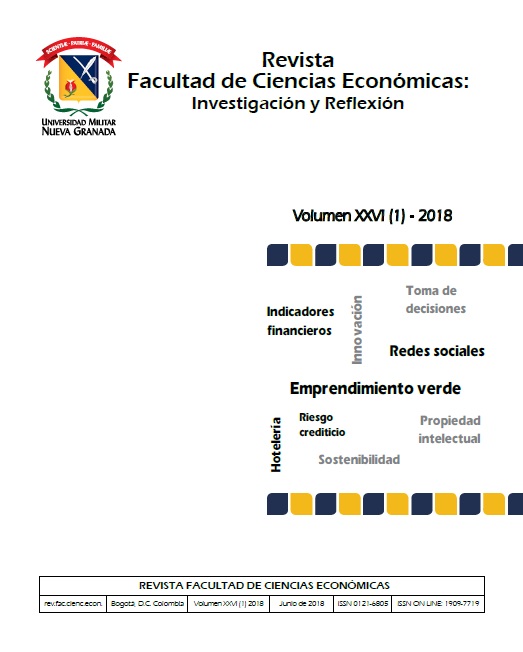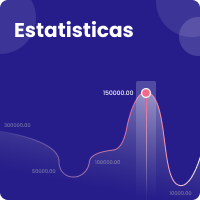Assimetrias nos sistemas educativos e nos padrões institucionais: para a construção de un indicador global de capital humano
Resumo
Neste trabalho apresenta-se uma revisão teórica e empírica sobre a relação capital humano e crescimento econômico. Encontra-se que existe uma relação do capital humano com outros fatores, como a qualidade da educação, a estabilidade política, a fiabilidade do sistema judicial, a corrupção e a burocracia. Igualmente, apresenta-se uma análise a respeito das considerações teóricas do capital humano, realçando as divergências estatísticas apresentadas nos coeficientes estimados, quando se tomam diferentes variáveis para capturar os efeitos deste fator sobre o produto. Além do mais, faz-se uma revisão teórica sobre a importância do capital humano na produtividade, e analisam-se as assimetrias institucionais com as estatísticas vigentes para 37 países. Por último, propõe-se e calcula-se um Indicador Global de Capital Humano (IGCH).
Downloads
Referências
Acemoglu, D. & Verdier, T. (1998). Property Rights, Corruption and the Allocation of Talent: A General Equilibrium Approach. Econ. J. 108 (450):1381–1403. https://doi.org/10.1111/1468-0297.00347
Barro, J. R. (1991). Economic Growth in a Cross Section of Countries. Quarterly Journal of Economics, CVI (May): 407-43 https://doi.org/10.2307/2937943
Blanchard, O. (1997). Microeconomic, Ed. Prentice Hall.
Caballé, J. & Santos, M.S., (1993). On endogenous growth with physical and human capital. Journal of Political Economy 101: 1042-1067. https://doi.org/10.1086/261914
Caselli, F., Esquivel, G. & Lefort, F. (1996). Reopening the Convergence Debate: A New Look at Cross-Country Growth Empirics. Journal of Economics Growth, 1: 363-389. https://doi.org/10.1007/BF00141044
Dessus S. (2001). Human capital and growth the recovered role of educational systems. World Bank
Dornbusch, R., Fischer S. & R. Startz (1998), Macroeconomía, McGraw-Hill, Séptima Edición, Cap. 1.
Johannes, H. (1998). Human capital and economic growth a survey of the literatura. CPB Report
Lucas, R. E. Jr., (1988). On the Mechanics of Development Planning. Journal of Monetary Economics 22: 3-42. https://doi.org/10.1016/0304-3932(88)90168-7
Mankiw G. Macroeconomía. (2009) 5ª. Edición. Cengage Learning editores. México D.F.
Mankiw. N., Romer, D. & Weil, D. (1992). A Contribution to the Empirics of Economic Growth. The Quarterly Journal of Economics, 107 (2): 407-437 https://doi.org/10.2307/2118477
Mauro, P. (1995). Corruption and Growth. Quarterly Journal Economics 110 (3) https://doi.org/10.2307/2946696
Mauro, P. (1997). The effects of corruption on growth, investment, and government expenditure: A cross-country analysis. Institute International for Economics.
Pritchett, L. (1996). Where Has All the Education Gone?. Policy, Research working paper; no. WPS 1581. Washington, DC: World Bank.
Rebelo, S. (1991). Long-Run Policy Analysis and the Long-Run Growth. Journal of Political Economy 99 (3): 500-521. https://doi.org/10.1086/261764
Reveiz, E. (2004). El desenlace neoliberal: tragedia o renacimiento.
Rogers, M. (2008). Directly Unproductive Schooling: How Country Characteristics Affect the Impact of Schooling on Growth. European Economic Review, 52: 356-385. https://doi.org/10.1016/j.euroecorev.2007.03.001
Romer, P. (1986). Increasing Returns and Long-Run Growth. Journal of Political Economy, Romer, P. (1990). Endogenous Technological Change. Journal of Political Economy 98(14): 71-102.
Sáenz, J. & Díaz, A. (2010). Evaluation of Educational System, Including Peer Instruction, Educational Levels and Degree s of Freedom, Working paper
Shultz T.W. (1961). Investment in Human Capital. America Economic Review. 51: 14-15
Uzawa, H. (1965). Optimal technical change in an aggregative model of economic growth. International Economic Review 6: 18-31. https://doi.org/10.2307/2525621











